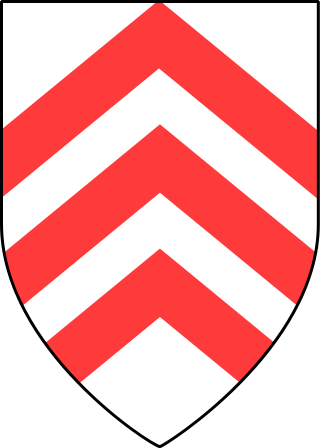
The 91st Air Landing Division was a German Army infantry division in World War II.

The 78th Infantry Division, later known as the 78th Assault Division, was a German infantry formation which fought during World War II. After the 78th Assault Division was destroyed near Minsk in July 1944, the 78th Volksgrenadier Division was created.

The 6th Infantry Division was a unit of the German Army during World War II.

The 26th Infantry Division was a pre-World War II German Infantry Division of the 1st mobilisation wave. It was mobilised for World War II on September 26, 1939, disbanded on September 10, 1944, near Radom and reformed as the 26th Volksgrenadier Division on September 17, 1944, near Poznań by absorption of the new 582nd Volksgrenadier Division of the 32nd mobilisation wave. Remnants of the Division entered U.S. captivity in the Harz region in 1945.
The 326th Infantry Division was the only Eastern Front veteran division to have fought in the battles of Normandy. It was formed on November 9, 1942, shortly after its return from Southern Russia to serve as an occupation force in France. On May 5, 1943, the division was transformed into a static division. The 326th Infantry Division was destroyed during the Battle of Normandy. A new 326th Volksgrenadier Division was formed on September 4, 1944, in Galanta by redesignation of the new 579th Volksgrenadier Division of the 32nd mobilisation wave. In 1945 the division, separated into two groups, entered U.S. captivity in the Ruhr Pocket and Harz respectively.

A first 277th Infantry Division was ordered to form on May 22, 1940, as part of the 10th mobilisation wave, but this order was rescinded after the French Surrender. A new 277th Infantry Division was formed in Croatia on November 17, 1943, as part of the 22nd mobilisation wave, the division was destroyed in the Battle of Normandy in August 1944. A third, 277th Volksgrenadier Division was formed on September 4, 1944, in Hungary by redesignation of the newly formed 574th Volksgrenadier Division of the 32nd mobilisation wave. In 1945 the division entered U.S. captivity in the Ruhr Pocket.
The 79th Infantry Division(79. Infanterie-Division) was an infantry division of Nazi Germany's Wehrmacht during World War II.

The 216th Infantry Division was a German Army division that was created during the Second World War; it was active from 1939–1943. It served on the Western Front in 1940 and later took part in the Eastern Front campaign, being involved in the disastrous Battle of Kursk.

The 272nd Volksgrenadier Division, was a German Army Volksgrenadier division formed following the defeats of the Normandy Campaign in 1944. Composed of men taken from existing Heer (army) units and airmen and sailors retasked to infantry duties, the division fought on the retreating Western Front until it was largely encircled in the Ruhr Pocket in April 1945.

The 162nd Turkistan Division was a military division that was formed by the German Army during the Second World War. It drew its men from prisoners of war who came from the Caucasus and from Turkic lands further east.

The 45th Infantry Division was an infantry division of the army of Nazi Germany during World War II. Towards the end of the war, the division was reassembled into a second iteration, the 45th Volksgrenadier Division

This is a sub-article to Battle of Narva.

The 31st Infantry Division was a German infantry division of the Army during World War II. It participated in the invasion of Poland in 1939 then the invasion of France and the Low Countries in 1940. As part of Panzergruppe 2. of Army Group Centre, it was involved in the invasion of the Soviet Union in June 1941. After hard fighting throughout 1941 and 1942 it joined the 9th Army and fought in the Battle of Kursk in July and August 1943. Along with the rest of the 9th Army, the division conducted a fighting withdrawal for the remainder of 1943, during which it sustained heavy casualties. In the early stages of the Soviet Operation Bagration of June to August 1944, the 31st Infantry Division was destroyed, a fate which subsequently befell most of Army Group Centre. The division was officially disbanded on 18 July 1944.

The 81st Infantry Division was an infantry division of the German Army during World War II. It was active from 1939 until 1945 and served primarily on the Eastern Front.
The 189th Infantry Division was a reserve division of the German Army in World War II.
The 278th Infantry Division German: 278. Infanterie-Division was a German Army infantry division in World War II. Formed in 1940 from older personnel, the first 278th never saw combat and was dissolved after the fall to France. The second 278th was formed in mid 1942 in Belgium and was sent to Army Group C Italy in late 1943.
The 49th Infantry Division was a military formation of the German Heer (Army) which served during the later years of the Second World War.

The 211th Infantry Division was a German infantry division of the German Heer during World War II, active from 1939 to 1944.
The 549th Volksgrenadier Division was a volksgrenadier infantry division of the German Army during World War II, active from 1944 to 1945. It was formed as the 549th Grenadier Division in July 1944 and became a volksgrenadier division several months later. Fighting on the Eastern Front, it was nearly destroyed in the East Prussian Offensive, with its remnants retreating west and surrendering to American troops at the end of the war.
The 271st Infantry Division was an infantry division of the German Heer during World War II.













